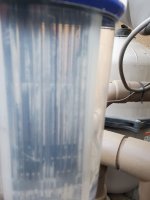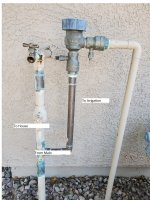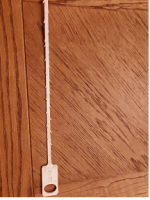- Mar 17, 2019
- 610
- Pool Size
- 12500
- Surface
- Plaster
- Chlorine
- Salt Water Generator
- SWG Type
- CircuPool RJ-45 Plus
Hi Folks,
My Circupool RJ-45 has been installed for 11 months now and I really like it thus far...except for the significant scaling I'm starting to see on the cell.
I have been trying to keep my CSI negative, but with my CH approaching 700 it's becoming pretty difficult to do. I am not seeing any white flakes in the pool, but wondering what I should do next.
I'm definitely going to do a full drain this winter (probably December) which will take care of the CH issue. My pH has been fairly stable at around 7.4-7.6 but with TA at 80 I am struggling to keep CSI negative.
The "Cell Maint" light isn't flashing yet, and the system seems to be working fine. Should I try to drive the TA lower lower using muriatic acid and aeration cycles? Should I clean the cell now, and if so, should I avoid MA when cleaning and try to clean the cell with a garden hose?
My Circupool RJ-45 has been installed for 11 months now and I really like it thus far...except for the significant scaling I'm starting to see on the cell.
I have been trying to keep my CSI negative, but with my CH approaching 700 it's becoming pretty difficult to do. I am not seeing any white flakes in the pool, but wondering what I should do next.
I'm definitely going to do a full drain this winter (probably December) which will take care of the CH issue. My pH has been fairly stable at around 7.4-7.6 but with TA at 80 I am struggling to keep CSI negative.
The "Cell Maint" light isn't flashing yet, and the system seems to be working fine. Should I try to drive the TA lower lower using muriatic acid and aeration cycles? Should I clean the cell now, and if so, should I avoid MA when cleaning and try to clean the cell with a garden hose?




